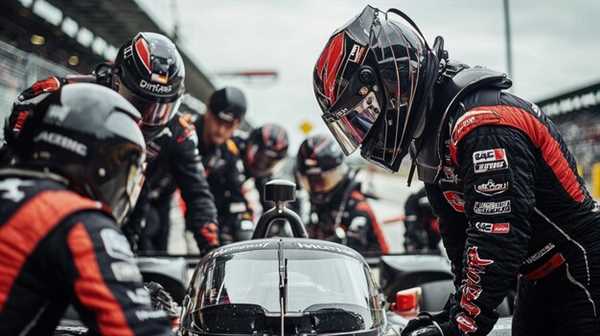
Identify your vision first. Determine the specific racing segment to focus on–whether it’s endurance racing, Formula cars, or rally competitions. Clear goals will guide all subsequent decisions.
Next, bring together individuals with diverse skills. A solid roster should include engineers, mechanics, and strategists who complement each other’s strengths. Each member should be driven by a shared passion for motorsport.
Source reliable sponsors early in the process. Establish solid relationships with companies that align with your ethos. Financial support can significantly impact performance and development, allowing better equipment and resources.
Invest time in researching technical regulations of your chosen discipline. Compliance with rules ensures eligibility and prevents costly setbacks. Understanding the competitive environment sets the stage for strategic planning.
Develop a robust testing program. Real-world practice highlights strengths and weaknesses, allowing for iterative improvements. Ensure the team utilizes data analysis to refine techniques and enhance vehicle performance.
Lastly, cultivate a strong fan engagement strategy. Building a community around your venture attracts attention and supports from enthusiasts. Utilize social media platforms to share milestones and connect with followers.
Defining Your Team Structure and Roles

Establish a clear hierarchy within your organization. Assign specific responsibilities to each member to ensure accountability. Key positions include a technical director overseeing engineering, a race engineer managing vehicle setup, a marketing manager promoting your brand, and a logistics coordinator handling transportation of equipment and personnel.
Focus on developing distinct roles for drivers, engineers, and support staff. Evaluate driver skills for performance and adaptability, while engineers should specialize in areas like aerodynamics, suspension, and telemetry. Support personnel must cover areas such as communications, medical assistance, and hospitality.
Implement regular meetings to facilitate communication among all members. This enhances coordination and allows for quick decision-making in critical situations. Utilize performance reviews to assess individual contributions and align them with the team’s objectives.
Encourage collaboration by creating mixed squads for testing sessions. This provides valuable feedback and optimizes vehicle performance. Leverage the unique strengths of each member to refine strategies and improve overall results.
Ensure transparency regarding roles and responsibilities to minimize overlap. Utilize project management tools to track tasks and timelines, ensuring everyone is aligned on goals and expectations. A well-defined structure leads to smoother operations and better performance on track.
Establishing Sponsorships and Funding Strategies
Formulate a targeted list of potential sponsors aligned with your vision. Research companies within the automotive, technology, and lifestyle sectors that actively invest in sports.
Craft a compelling proposal highlighting mutual benefits. Focus on visibility opportunities such as branding on vehicles, team uniforms, and promotional materials. Provide data on audience reach through social media and event attendance.
Engage in networking by attending industry events, trade shows, and motorsport competitions. Build relationships with decision-makers, showcasing your commitment and enthusiasm for the project.
Consider diversifying funding sources. Look into crowdfunding platforms where supporters can contribute in exchange for exclusive merchandise or experiences.
Implement tiered sponsorship packages. Offer various levels of engagement with distinct benefits, catering to businesses of different sizes and budgets. Tailor each package to meet specific brand needs.
Develop a robust digital presence. Maintain an active website and social media channels that highlight your team’s progress, achievements, and sponsorship opportunities.
Follow up consistently with potential partners. Establish a routine for communication to keep interested parties informed and engaged.
Evaluate and iterate on your funding strategies regularly. Analyze what works and adjust your approach based on results and feedback.
Developing a Strategy for Technical Development and Performance

Identify specific performance goals by analyzing historical data and competitor benchmarks. Focus on key metrics such as lap times, tire wear, and aerodynamic efficiency to define achievable targets.
Implement a robust data acquisition system to collect telemetry during test sessions. Use this information to pinpoint areas for improvement in vehicle dynamics and driver performance.
Establish a dedicated research and development (R&D) phase where innovative concepts are tested. Collaborate with engineers to explore alternative materials and design modifications that can enhance speed and handling.
Invest in simulation technologies to model vehicle behavior under various conditions. This allows for rapid prototyping and evaluation of different setups before physical testing, reducing costs and time.
Prioritize continuous education and skill enhancement for all personnel involved in technical operations. Regular training sessions on the latest advancements in engineering and technology can substantially boost performance outcomes.
Form strategic partnerships with suppliers and technology providers to access cutting-edge components and expertise. Leverage these relationships to drive innovation and ensure a competitive edge.
Regularly revisit and adjust the strategy based on performance results and emerging trends in automotive engineering. This adaptive approach ensures the operation remains ahead of rivals while refining technical capabilities.


